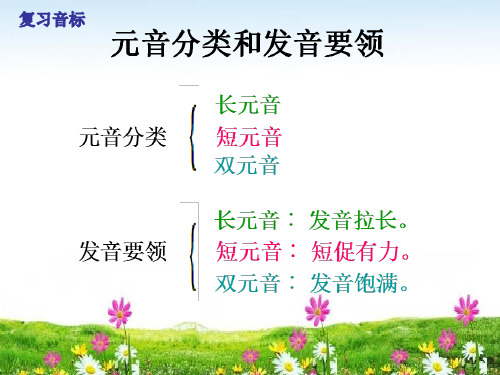冠词,名词变复数
- 格式:doc
- 大小:22.50 KB
- 文档页数:1

名词一、名词的复数:1.名词变复数的规则形式1).一般情况下直接加s book------books cup-----cups2).以辅音字母+y结尾的,先变y为i再加es . city-------cities family-----families3).以s、x、sh、ch结尾的加es . bus-----buses wish------wishes watch------wathes4).以o结尾的多数加S 初中阶段只有三个单词加es . tomato-----tomatoes potato------potatoes hero-----heroes5).以f、fe 结尾的,先把f、fe变v 再加es leaf----leaves self---selves shelf----shelves life----lives thief---thieves2.少数名词的复数形式是不规则的man----men woman---women child----childre foot-----feet tooth----teeth mouse---mice3.单数和复数形式相同。
deer---deer fish----fish sheep----sheep Chinese ----Chinese Japanese---Japanese4.某国人的复数。
1). 中、日不变。
Chinese----Chinese Japanese---Japanese2). 英、法变。
Englishman----Englishmen Frenchman----Frenchmen3). 其余s加后面。
American -----Americans German----Germans Australian---Australians二、不可数名词:1.不可数名词:1).不能直接用数字表数量2).不能直接加a或an 3).没有复数形式4).可用some、any 、lots of、plenty of 、much 修饰5).可用“量词短语”表示2.不可数名词的数量的表示方法:a / 数字+ 量词+ of + 不可数名词 a piece of paper a cup of tea a glass of milk三、名词的所有格:1. ’s 所有格。

名词变复数名词变复数的规则变化1.一般名词复数是在名词后面加上“s”,如map→maps,bag→bags等;2.以s,sh,ch,x等结尾的词加“es”,如bus→buses,watch→watches等;3.以辅音字母+y结尾的词,变y为“i”加“es”,如baby→babies等;以元音字母+y结尾的名词变复数时,直接加“s”变复数,如monkey→monkeys,holiday→holidays;4.以o 结尾的名词变复数时:a)无生命的加“s”,名词有:photo→photos,piano→pianos,radio→radios,zoo→zoos b)有生命的加“es”,名词有:potato→potatoes,tomato→tomatoes;5.以f或fe结尾的名词变复数时:a)加“s”的名词有:belief→beliefs,roof→roofs,safe→safes,gulf→gulfsb)去掉f,fe加“ves”的名词有:half→halves knife→knives,leaf→leaves,wolf→wolves,wife→wives,life→lives,thief→thieves;名词变复数的不规则变化1)child→children,foot→feet,tooth→teeth,mouse→mice,man→men,woman→women (注意:由一个词加man 或woman构成的合成词,其复数形式也是-men和-women,如an Englishman,two Englishmen。
但German不是合成词,故复数形式为Germans;Bowman是姓,其复数是the Bowmans。
).2)单复同形,如:deer,sheep,fish,Chinese,Japanese.3)集体名词,以单数形式出现,但实为复数。
例如:people,police,cattle等本身就是复数,不能说a people,a police,a cattle,但可以说a person,a policeman,a herd of cattle. 4)以s结尾,仍为单数的名词,如:A. maths,politics,physics等学科名词,一般是不可数名词,为单数。


名词单数变复数变化规则:一.可数名词1.一般名词复数是在名词后面加上“s”,如map→maps,bag→bags,book-books 等;2.以s,x,sh,ch结尾的词加“es”,如bus→buses,watch→watches, box-boxes 等;3.以f或fe结尾的名词变复数时,去掉f,fe 加ves的名词有:half→halves knife →knives leaf→leaves wolf→wolves wife→wives life→lives thief→thieves 4.以o 结尾的名词变复数时:a)加s的名词有(无生命):photo→photos ,piano→pianos,radio→radios b)加es的名词有(有生命):potato→potatoes tomato→tomatoes5.以辅音字母+y结尾的词,变y为i加es,如baby→babies, family-families, study-studies等;以元音字母+y结尾的名词变复数时,直接加s变复数,如monkey→monkeys,holiday→holidays,storey→storeys(楼层);6. oo变ee的单词:foot-feet, goose-geese, tooth-teeth;7. a变e的单词:man-men, woman-women, policeman-policemen;8. 复数与原形一致的单词:fish-fish, sheep-sheep, deer-deer, Chinese-Chinese, Japanese-Japanese;注:1.fish指“鱼肉”时,是不可数名词;2.fish指“鱼的多少”时,是可数名词,但单数和复数同行;There are many fish in the river。
3.fish强调鱼的“种类“时,复数是“fishes”。
There are many kinds of fishes in the river。

名词、代词、冠词考点一名词一、可数名词及其变为复数形式的规则1.可数名词定义可用数目计算的名词是可数名词。
个体名词、集体名词大多为可数名词。
2.可数名词变复数的规则1)规则变化2)不规则变化①单复数不同形的名词foot—feet脚man—men男人woman—women女人mouse—mice老鼠tooth—teeth牙齿goose—geese鹅child—children孩子②单复数同形的名词sheep绵羊deer鹿Chinese中国人Japanese日本人means方法series连续species种类spacecraft航天器③外来名词的复数形式phenomenon—phenomena现象basis—bases基础crisis—crises危机二、不可数名词1.定义:不可用数目计算的名词是不可数名词。
2.汉语中为可数概念而英语中却不可数的词:furniture家具equipment设备clothing衣服(总称) news新闻information信息bread面包wealth财富cloth布料poetry诗歌(总称) advice建议3.有些名词既可作不可数名词又可作可数名词,但意义有所变化。
三、名词所有格1.名词所有格的形式2.名词所有格加's词尾的规则【注意】表示各自的所有关系时,名词末尾均加“'s”。
如果不是这样,仅在最后一词末尾加“'s”,表示他们共同的所有关系。
Tom's and Jim's rooms汤姆和吉姆各自的房间Tom and Jim's room汤姆和吉姆共同的房间四、名词构词法五、名词的句法功能1.作主语、宾语、表语、补语、定语、状语。
Mr. Smith was born in Canada.史密斯先生生于加拿大。
(主语)Johnson is reading a novel in his study.约翰逊正在书房读小说。

可数名词变复数1)单数名词加s: students, apples, bags, trees, books, brothers.2)以s、x、sh、ch结尾的名词加es: glasses, boxes, brushes, matches.3)以辅音字母加y结尾的名词,变y为i加es: cities, babies, enemies.4)以f或fe结尾的名词,多数变f为v加es: wives, knives.但有些词只加s: roofs, proof s, chiefs.5)以o结尾的名词,有些加es: Negroes, heroes, tomatoes, potatoes;其它加s: radio s, zoos, pianos, photos; zero加s,es均可。
6)不规则名词:*foot→feet, goose→geese, tooth→teeth, child→children, man→me n,woman→women, mouse→mice;*单复数同形:sheep, deer, fish, Chinese, Japanese,li,jin,mu,yuan;*人民币除元、角、分外,美元、英镑、法郎等都有复数形式;*集体名词,以单数形式出现,但实为复数。
如:people police cattle 等本身就是复数,不能说 a people,a police,a cattle,但可以说a person,apoliceman,a head of cattle;*the English,the British,the French,the Chinese,the Japanese,the Swiss 等名词,表示国民总称时,作复数用。
如:The Chinese are industries and brave.中国人民是勤劳勇敢的。
*表示由两部分构成的东西,如:glasses (眼镜)trousers,clothes若表达具体数目,要借助数量词pair(对,双);suit(套); a pair of glasses; two pairs oftrousers.*另外还有一些名词,其复数形式有时可表示特别意思,如:goods货物,waters水域,fishes(各种)鱼。
语法复习:一、名词复数规则1.一般情况下,直接加-s,如:book-books, bag-bags, cat-cats, bed-beds2.以s. x. sh. ch结尾,加-es,如:bus-buses, box-boxes,brush-brushes, watch-watches3.以“辅音字母+y”结尾,变y为i, 再加-es,如:family-families, strawberry-strawberries4.以“f或fe”结尾,变f或fe为v, 再加-es,如:knife-knives 5.不规则名词复数:man-men, woman-women,policeman-policemen, policewoman-policewomen, mouse-mice,child-children foot-feet,.tooth-teeth fish-fish, people-people, Chinese-Chinese, Japanese-Japanese6.以o结尾的单词,只要它的意思是有生命的,复数就加es;若无生命,则直接加s【如:photo照片(无生命)复数:photos】。
但tomato/potato加es定冠词的用法总结1)特指某些人或事物;2)用在说话双方都明了的人或事物前。
3)用在前文提到过的人或事物前。
4)用在世界上独一无二的事物前。
5)用在形容词最高级、序数词及only前6)用在same前7)用在江、河、海洋、海峡、群岛、山系等专有名词前。
8)用在乐器前、用在姓氏的复数形式前,表示全家人。
2)零冠词1)在日期、月份、节日等名词前不加the 例如:1 October is Chinese National Day.2) 在表示称呼、职务或头衔的名词前不加theEddie was elected to be a secretary of our club.3) 学科、语言前不加the4)球类、棋类、牌类运动或游戏前不加the5) 一日三餐前不加the语法复习练习题:一将下列的名词变成复数形式。
名词复数的规则变化名词复数的规则变化1.⼀般情况下,直接加-s.清辅⾳后读/s/浊辅⾳和元⾳后读/z/ ,如:bag-bags /car-cars, map-maps ,book-books, bag-bags, cat-cats, bed-beds 2.以s. x. sh. ch结尾,加-es, 读/iz/,如:bus-buses, box-boxes, brush-brushes, watch-watches3.以“辅⾳字母+y”结尾,变y为i, 再加-es, 读/z/,如:family-families, strawberry-strawberries4.以“f或fe”结尾,变f或fe为v, 再加-es,如:knife-knives5.不规则名词复数:man-men, woman-women, policeman-policemen, policewoman-policewomen, mouse-micechild-childrenfoot-feet,. tooth-teeth, mouse--micefish-fish, people-people, Chinese-Chinese, Japanese-Japanese名词复数的不规则变化1)child——children foot——feet tooth——teethmouse——mice man——men woman——women注意:由⼀个词加man 或woman构成的合成词,其复数形式也是-men 和-women,如an Englishman,two Englishmen.但German不是合成词,故复数形式为Germans;2)单复同形,如deer,sheep,fish,Chinese,Japanese ,li,jin,yuan,two li,three mu,four jin等。
但除⼈民币的元、⾓、分外,美元、英镑、法郎等都有复数形式。
名词单复数以及冠词用法名词表示某一事物,有具体的和抽象的之分。
分为可数名词和不可数名词。
强调:不可数名词都默认为单数,所以总是用is或者was;1、可数名词如何变“复数形式”:a.一般情况下,直接加-s,如:book-books, bag-bags, cat-cats, bed-bedsb.以s. x. sh. ch结尾,加-es,如:bus-buses, box-boxes, brush-brushes, watch-watchesc.以―辅音字母+y‖结尾,变y为i, 再加-es,如:family-families, strawberry-strawberriesd.以―f或fe‖结尾,变f或fe为v, 再加-es,如:knife-knives ,thief-thieves;e.以―o‖结尾的词,分两种情况1)有生命的+es 如:mango-mangoes potato -potatoestomato-tomatoes hero-heroes2) 无生命的+s如:photo-photos radio-radiosf. 名词的复数形式的不规则变化1)man---men woman---women child---children foot---feet tooth---teeth mouse---mice goose---geese2) 单复数同形的名词,如:deer, sheep, Chinese, Japanese3)还有一些名词本身就是以复数形式出现的。
如:shorts , jeans, socks, clothes, trousers,shoes2、不可数名词没有复数。
如果要计算不可数名词所表达的数量,就得在数词和不可数名词之间加上―量词+of‖。
例如:a glass of water, a piece of paper, a bottle of juice判断步骤:↗如是am、is或was→原形读句子→读该单词→认识该单词→理解意思→看be动词↘如是are或were→加s或es二、冠词冠词是一种虚词,不能独立使用,通常放在名词的前面,分为―不定冠词‖和―定冠词‖两种。
一.选择
1. I have been waiting for _________ hour and a half.
A. the
B. a
C. an
D. whole
2. He has already worked for _________ hour.
A. the
B. an
C. a
D. /
3. John is _________ university student.
A. some
B. any
C. a
D. an
4. A hammer is _________ useful tool.
A. a
B. an
C. some
D. any
5. Would you like to bring _________ friend to my party?
A. any
B. the
C. some
D. a
6. He is _________.
A. engineer
B. one engineer
C. an engineer
D. a engineer
7. Look! _________ eraser is on the floor. Whose is it?
A. A
B. An
C. /
D. The
8. Be _________ honest man!
A. a
B. an
C. the
D. that
9. My teacher is _________ English man!
A. /
B. the
C. an
D. a
10. Tom isn’t _________ Chinese boy. He is _________ English boy.
A. a,a
B. a, an
C. an, a
D. an, an
11. How many _________ are there in your city ?
A. zoos
B. zooes
C. zoo
D. zooss
12. She gave me seven _________ of hers.
A. photo
B. photos
C. photoes
D. photoss
13. I bought two _________ for her.
A. radioes
B. radio
C. radioss
D. radios
14. We can see lots of _________ in the shop.
A. pianoes
B. pianos
C. pianoss
D. piano
15. Learn from fighting _________.
A. heroes
B. heros
C. heross
D. hero’s
16. There are several _________ in the basket.
A. tomatos
B. tomato
C. tomatoss
D. tomatoes
17. Yesterday I bought some _________ in the market.
A. tomatoes
B. potatos
C. vegetable
D. tamatos
18. He spends a lot of money on _________.
A. photoes
B. radioes
C. pianoes
D. toys
19. He had so much _________ that he did the work of three men.
A. energy
B. energies
C. energys
D. an energy
20. She had _________ to do, so she didn’t do _________ that evening.
A. many homework, many housework
B. much homework, any houseworkds
C. some homeworks, much houseworks
D. much homework, any housework
21. That’s useful _________.
A. information
B. informations
C. piece of information
D. piece of informations
22. They don't have to do _________ today.
A. much homework.
B. many homework
C. many homework
D. much homeworks
23. Give _________ paper, please.
A. a
B. pieces
C. piece
D. a piece of
二.用a或an填空
1. It takes _________ hour and _________ half to get there.
2. _________ elephant is much bigger than _________ horse.
3. Comrade Wu is _________ usually good singer.
4. This is _________ novel written by _________ Egypian writer.。